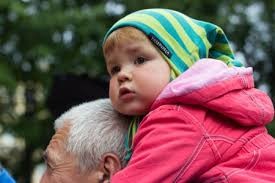Shyness is one of the most complex and common problems of interpersonal relationships. It gives rise to a number of very significant difficulties in dealing with people. Shy people find it difficult to get acquainted, in the course of communication they experience negative emotional states, have difficulties expressing their opinions, differ in excessive restraint, do not know how to submit themselves, are constrained in the society of people,
Like most psychological problems, this feature has its roots in childhood. According to the observations made, many children have shyness at the age of three and all pre-school childhood can be preserved. Almost all the children, who behaved shyly at the age of three, retained this quality before school. The expression of shyness during the preschool period undergoes changes. In the younger preschool age, it manifests itself the weakest, in the fifth year of life it sharply increases and again decreases to seven. In the fifth year of life, the increase in shyness has the character of an age-related phenomenon. Appearing in this period, this quality can remain a stable feature of the person overshadowing and complicating a person's life. It is extremely important to recognize this feature on time and to stop its development.
Shy children in behavior, as a rule, reflect the struggle of opposing tendencies: on the one hand, the child wants to approach an adult unfamiliar person and even begins to move towards him, however, as approaching, the steps slow down and the child stops, passes around the person or comes back. This behavior is called ambivalent.
During communication with strangers or when meeting new circumstances, the child experiences acute emotional discomfort. Its signs are manifested in uncertainty, timidity, tension, expression of fear or anxiety. Children are afraid of any public speeches, they are even frightened by the need to answer the questions of a teacher or teacher in class.

These features can easily be seen by observing the child's behavior. Children, who they are too often shown, especially in safe situations, are considered to be shy.
The analysis shows that these children are highly sensitive to the assessment of an adult (both expected and real). Shy children have a sharp expectation of evaluation and perception. Luck calms and inspires them, but the slightest remark is the slowing down of activity and a new surge of embarrassment and timidity. The child behaves extremely shy in those situations in which he expects failure. In cases of difficulty, he hesitantly looks into the eyes of an adult, embarrassed to ask for help. From time to time, overcoming internal tension, shyly smiles, slightly shivers and quietly says: "It does not work out". He is at the same time unsure of the positive assessment of the adult and the correctness of his actions. Shyness manifests itself in the desire to attract attention from one side and the fear of being in the center of attention, stand out among peers, on the other. This feature is very clearly manifested when the child meets the adult for the first time, and also at the beginning of the joint activity.
All difficulties in communicating the child with other people are closely related to the perception of the attitude of others and his attitude toward oneself. The expectation of a critical attitude on the part of adults determines his embarrassment and timidity. This is especially noticeable when dealing with unfamiliar or unfamiliar people, whose relationship to him is unknown. Not daring to openly get support, children resort to a very peculiar way of strengthening their self, bringing with them to the classroom their favorite toy, which they press against themselves in case of difficulty. The uncertainty of an adult's assessment practically paralyzes the child; so he does his best to avoid this situation, or to shift the attention of the interlocutor to something else.
It is worth noting that the level of mental development of such children is not inferior to peers. Very often shy children cope with tasks much better than their uncomplicated peers. However, in the case of a negative evaluation or failure to achieve a result, they are less persistent. These children are characterized by an extremely acute experience of the evaluation of an adult, especially if it is often negative, paralyzing and communicating, and the practical activities of the child. The unscrupulous child in such a situation rushes to an active search for an error and tries to attract the attention of an adult, the shy preschooler lowers his eyes, externally and internally shrinks, feeling guilty for ineptitude, and does not dare to seek help.
Summarize. A shy child strives to communicate with other people, kindly treats them, on the one hand. Then, on the other hand, one does not dare to show one's needs and oneself. The reason for such violations is the nature of the child's relationship to himself. The child has a fairly high self-esteem, considers himself very good, and at the same time doubts the benevolent attitude of others, especially strangers. The uncertainty of a shy child blocks his initiative, does not allow him to meet the existing needs for full communication and in joint activity to the full.
He worries too much. Increased anxiety often obscures the content and communication and joint activities. Respect and recognition act as the main ones, overshadowing business and cognitive interests, preventing the realization of abilities and communication. The tormenting experience of one's own self, his vulnerability, constantly binds the child, not giving him the opportunity to express his experiences, to openly show him, often excellent, abilities. However, in situations where the child is distracted and "forgets about himself," he is as sociable and open as his unruly peers.
Valentina Akhmetzyanova
